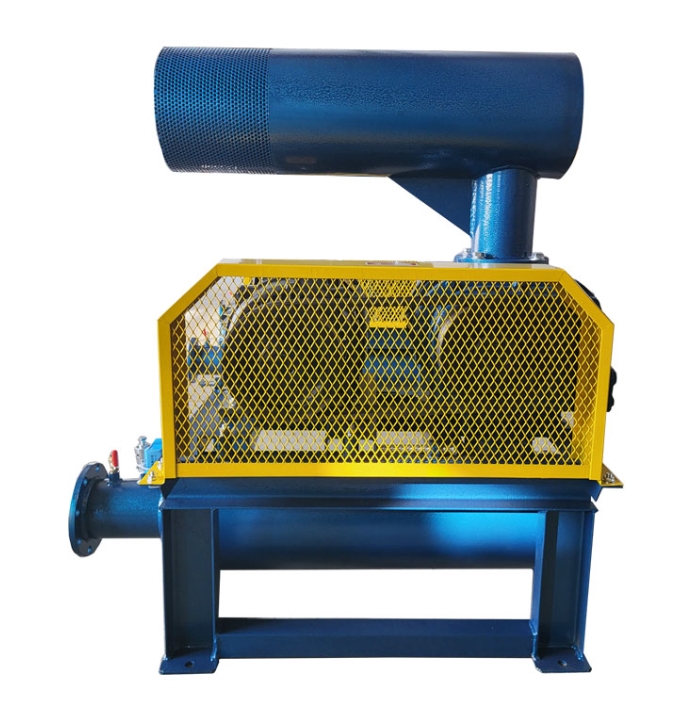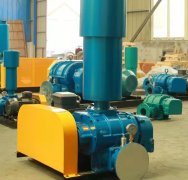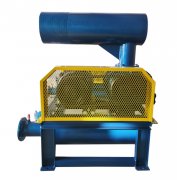**Guidelines for Selection of Aerators for Sewage Treatment Aeration Tanks: Performance Comparison and Application Recommendations**
The selection of aerators in sewage treatment aeration systems directly affects oxygen transfer efficiency, energy consumption, and operational stability. The following are technical comparisons and selection suggestions for mainstream aerators:
---
**1、 Comparison of mainstream aerator types and performance**
|* * Type * * | * * Micro porous aerator * * | * * Spin mixed aerator * * | * * Pipe aerator * * | * * Disc aerator * * | * * Jet aerator * *|
|-------------------|-------------------------|---------------------|---------------------|---------------------|---------------------|
|Oxygen utilization rate () * * | 25-40 | 18-28 | 20-35 | 15-25 | 10-20|
|Bubble diameter (mm) * * | 1-3 | 3-5 | 2-4 | 3-6 | 5-10|
|* * Resistance loss (kPa) * * | 3-5 | 2-4 | 4-6 | 2-3 | 8-12|
|Applicable water depth (m) * * | 3-8 | 2-6 | 4-10 | 2-5 | 3-15|
|* * Lifespan (years) * * | 5-8 | 4-6 | 6-10 | 3-5 | 10+|
|Energy consumption (kWh/kgO) * * | 2.8-3.5 | 3.5-4.2 | 3.0-3.8 | 3.8-4.5 | 4.5-6.0|
|* * Blocking risk * * | High (requires regular acid washing) | Medium | Low | High ||
|* * Cost (yuan/piece) * * | 150-300 | 80-200 | 200-500 | 100-250 | 5000-20000|
---
**2、 Key indicators for selection**
1. Oxygen Transfer Efficiency (OTE)**
-Calculation formula: OTE=(actual dissolved oxygen/theoretical oxygen supply) ×
-The OTE of the microporous aerator can reach 35 in clear water testing, and the actual sewage can be reduced to 25-30.
2. Standard Oxygen Transfer Rate (SOTR)**
-Typical values: 4-6kgO/h · for microporous aerators and 3-5kgO/h · m for tubular aerators.
3. Anti clogging performance**
-The aerator using EPDM (ethylene propylene diene monomer) membrane has better oil resistance than silicone material.
---
**3、 Recommended according to process requirements**
1. * * Municipal sewage treatment (AAO process)**
-* * * *: Φ 215mm microporous disc aerator (oxygen utilization rate of 30+)
-* * Alternative solution * *: Φ 65mm tubular aerator (suitable for deep water areas)
2. Industrial wastewater (high COD)**
-* * * *: Spin mixing aerator (anti clogging)+auxiliary jet aeration (to cope with peak load)
-* * Case * *: A paper mill with a COD of 5000mg/L reduced energy consumption by 18% after using rotary mixing aeration.
3. MBR process**
-* * Required * *: Pipe aerator with self-cleaning function (intermittent aeration mode, cycle of 10 minutes on/off)
4. Deep well aeration (water depth ≥ 15m)**
-* * Select * *: Dedicated deep well jet aerator (requires supporting high-pressure fan, pressure ≥ 150kPa)
---
**4、 Efficiency enhancing technical measures**
1. * * Intelligent control**
-Based on DO sensor linked variable frequency fan (DO set value 2mg/L, fluctuation ± 0.3mg/L)
-Case: After the renovation of a sewage treatment plant, an annual energy saving of 230000 kWh was achieved.
2. * * New materials**
-Nano coated aeration tube (such as TiO coating, reducing biofilm adhesion by 30)
3. Layout optimization**
-Adopting a gradually decreasing aeration design (with a front-end aeration density of 60 and a back-end aeration density of 40)
-Suggested spacing for aerators: 0.6-0.8m for disc type and 0.3-0.5m for tubular type.
---
**5、 Key points of maintenance management**
1. * * Cleaning cycle**
|* * Sewage type * * | * * Cleaning method * * | * * Frequency * *|
|---------------|-------------------|---------------|
|Municipal sewage | Citric acid soaking | 6 months|
|Industrial wastewater | High pressure water gun+acid washing | 3 months|
2. * * Performance monitoring**
-Monthly testing: Resistance loss (>5kPa requires cleaning)
-Quarterly testing: Oxygen utilization rate (replacement required if decrease>15)
---
**6、 Economic analysis (taking a 10000 ton/day sewage plant as an example)**
|Type of aerator * * | Initial investment (RMB 10000) | 5-year energy consumption cost (RMB 10000) | Total cost (RMB 10000)|
|----------------|---------------|------------------|-------------|
|Micro porous disc | 85 | 210 | 295|
|Tube type | 120 | 180 | 300|
|Spin mixing | 65 | 250 | 315|
|* * Recommended choice * * | * * Pipe aerator * * (comprehensive cost)|
---
**7、 Conclusion and Suggestions**
1. * * Priority selection * *:
-Conventional sewage treatment plant → EPDM membrane microporous aerator**
-High suspended solids wastewater → * * gyratory aerator**
-Deep water/industrial wastewater → * * Anti clogging tubular aerator**
2. * * Required System * *:
-Online DO monitoring+frequency conversion control (energy saving 15-25)
-Automatic cleaning device (extends lifespan by 30)
3. * * Future Trends * *:
-Intelligent aeration system (AI dynamically adjusts aeration volume)
-Ultra fine bubble technology (bubble diameter<0.1mm, OTE>50)
Through scientific selection and refined management, the energy consumption of the aeration system can be reduced by 20-30%. It is recommended to conduct hydraulic simulation and oxygen balance calculation during the design phase to ensure operational effectiveness.



